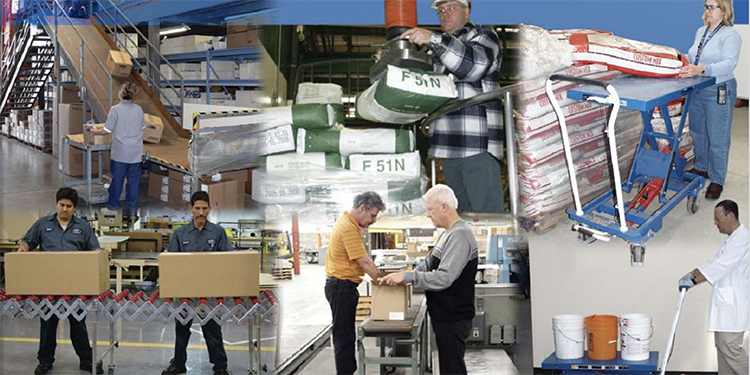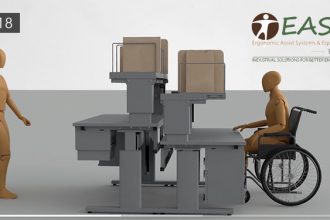EASE Council Publication Offers Ergonomic Guidelines And Solutions For Manual Material Handling

While lately there has been increasing interest in automated material handling solutions, there will always be manual material handling tasks in warehouses, distribution centers, and manufacturing facilities. Performing those tasks properly and with the optimal ergonomic solution reduces the risk of an employee sustaining a musculoskeletal injury that can lead to Worker’s Compensation costs as well as lost productivity. In recognition of this, the Ergonomic Assist Systems & Equipment (EASE) Council of MHI partnered with the National Institute for Occupational Safety and Health (NIOSH) and the California Division of Occupational Safety and Health (Cal/OSHA) to develop the free, downloadable publication “Ergonomic Guidelines for Manual Material Handling.”
The guide is one of the most downloaded resources on the EASE Council website and has been indexed to enable readers to quickly search for and find more information about ergonomic handling approaches. It also helps supervisors and managers recognize high-risk manual material handling work tasks and choose effective options for reducing their physical demands. Divided into five sections, the publication offers solutions to improve the handling of rectangular, square, or cylindrical containers, as well as sacks and bags.
The first section offers ways to improve manual material handling in an operation. In addition to outlining the benefits of a more ergonomic work environment, it also details risk factors, types of ergonomic improvements, and training. Guidance is offered for how to identify physical risk factors across five key conditions:
- Awkward postures like bending or twisting.
- Repetitive motions such as frequent reaching, lifting, or carrying.
- Forceful exertions associated with carrying or lifting heavy loads.
- Pressure points such as grasping loads or leaning against hard surfaces.
- Static postures wherein personnel maintain fixed positions for a long time.
Also in the first section of the document is an explanation of ergonomic engineering improvements, including rearranging, modifying, redesigning, providing, or replacing tools, and adding equipment. Administrative ergonomic improvements are covered as well, such as alternating heavy and light tasks, adding more movement variety into a process, adjusting work schedules, modifying work practices to ensure associates perform work in their power zone (above the knees, below the shoulders, and close to the body), and work rotation among employees. Both approaches seek to lessen bending and stretching, minimize stress on shoulders and backs, and reduce the effort and force needed to perform work tasks.
The next three sections offer insights into proper lifting techniques and the types of ergonomic solutions available for easier manual lifting, lowering, filling, or emptying containers. It further details less strenuous approaches to manually carry containers and alternatives to manual handling of individual containers. Some examples include:
- Eliminating lifting from the floor and using simple transport devices like carts or dollies.
- Using lift-assist devices like scissors lift tables or load levelers.
- Using more sophisticated equipment like powered stackers, hoists, cranes, or vacuum assist devices.
- Guiding your choice of equipment by analyzing and redesigning workstations and workflow.
The final section of the publication includes a broad variety of resources. Readers will find several checklists for determining the risk associated with manual material handling processes; how to evaluate hazards associated with lifting, carrying, pushing, or pulling; an ergonomics awareness worksheet; and a checklist for assessing manual material handling risk factors.
Need more help in assessing your operation’s ergonomic risk and how to best mitigate it? The members of the Ergonomic Assist Systems & Equipment (EASE) Council of MHI are always available to consult, answer questions and make recommendations. Learn more about EASE.



